
China
In China, the Partnership will examine the nexus of aquaculture expansion to increase seafood provision and carbon sequestration to conserve coastal biodiversity.
Developing aquaculture for food, climate mitigation and biodiversity
Background

Service category
Service
Potential species providing service
Provisioning
Augment wild fisheries catches
Bivalves, Fish, Algae
Regulating
Carbon sequestration
Bivalves, Algae
Acidification regulation
Algae
Coastal protection
Bivalves, Fish, Algae
Nutrient removal
Bivalves, Algae
Improve water clarity
Bivalves, Algae
Habitat and supporting
Provision of artificial habitat
Bivalves, Fish, Algae
Cultural
Livelihoods
Bivalves, Fish, Algae, Crustacea
Tourism
Bivalves, Fish, Algae, Crustacea
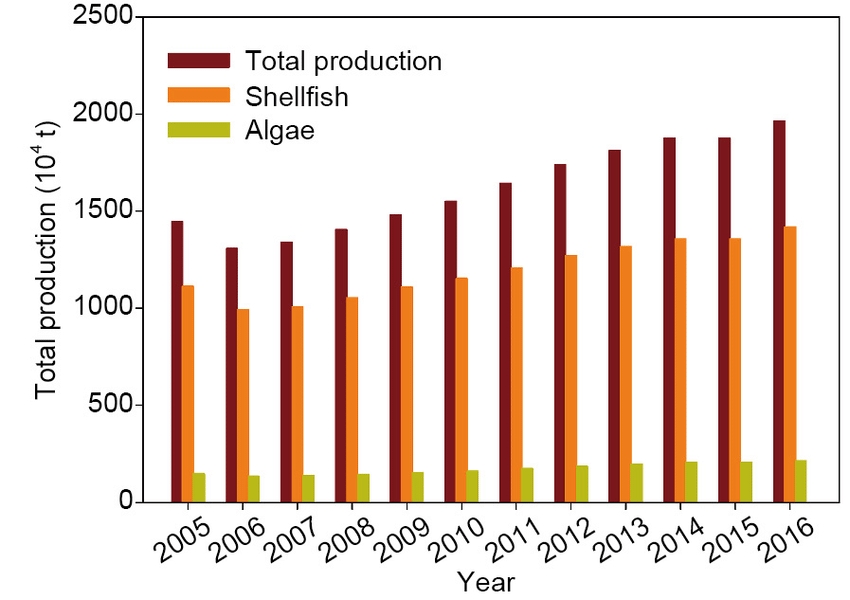
China’s developing mariculture has made significant contributions to ensuring food security since 1949 (Yu & Han, 2020).
In 2012, China’s mariculture output accounted for more than 70% of the world’s total output, making a considerable contribution to world food security. (Campbell & Pauly, 2013)
To ensure food security in mariculture, China has put forward the “Blue Granary” strategy, which aims to improve the output and quality of marine aquatic products while maintaining the protection of the marine ecological environment. (Han & Li, 2015; Yu & Han, 2020)
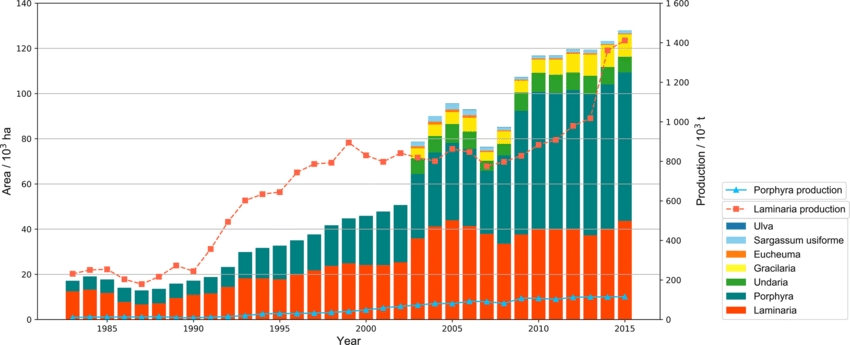
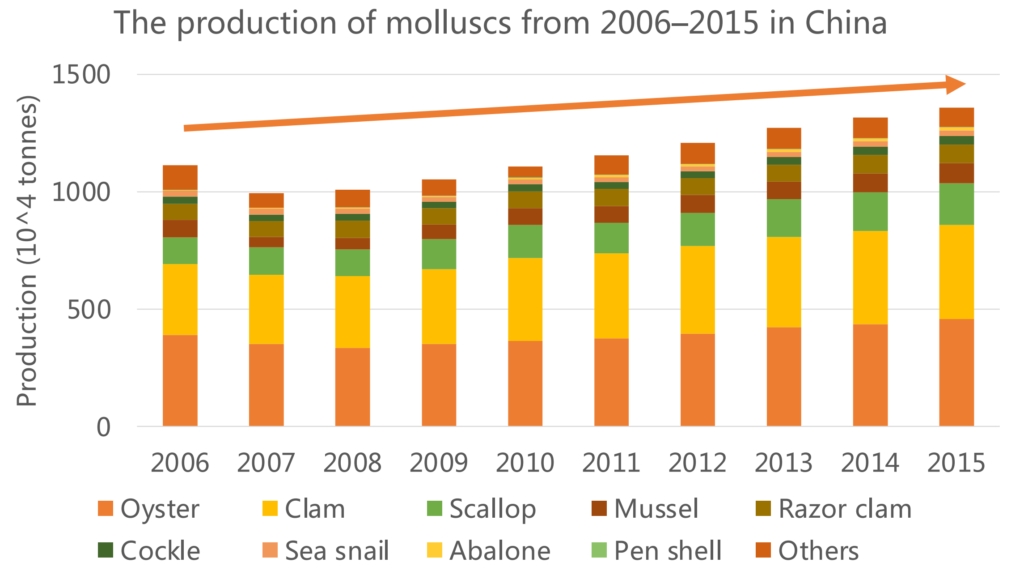
Shandong (Geographically called Subei, north Jiangsu) and Fujian province are largest seaweed and bivalve producers
These mariculture production may be valuable for the Solving-FCB project
Percentage of total production in typical mariculture systems (a), and the proportion of yield in typical mariculture systems in coastal provinces of China in 2019 (b) (Zhang et.al. 2022)
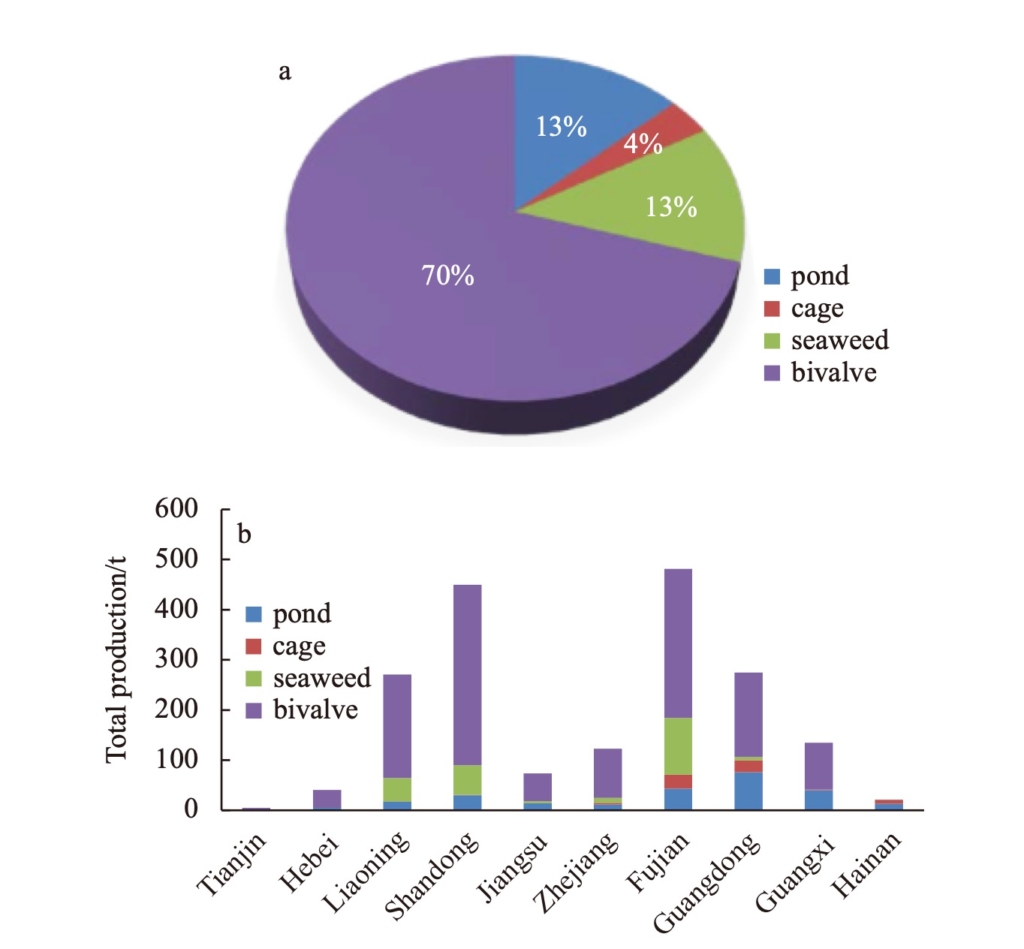
Purpose of the study
Answering the question: Whether seaweed & shellfish cultivation could help Solving-FCB ? If so, how?
Target 1: Quantify the expansion potential of marine seaweed and bivalves cultivation (Modelling based)
Target 2: Accounting the maximum potential of carbon naturalization by seaweed and bivalves cultivation (Modelling based)
Target 3: Validating the habitat provision services provided by seaweed and bivalves cultivation (including their infrastructures) (Survey and sampling based)
Target 4: Quantify the impact of climate change on seaweed cultivation production/ecosystem service potential (Modelling based).
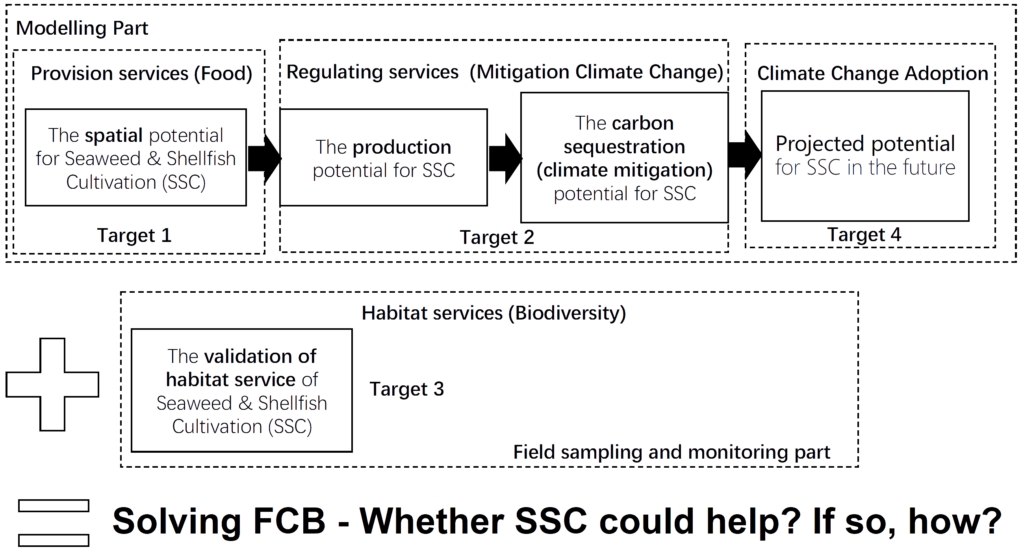
Target 1
Quantify the expansion potential of marine seaweed and bivalves cultivation
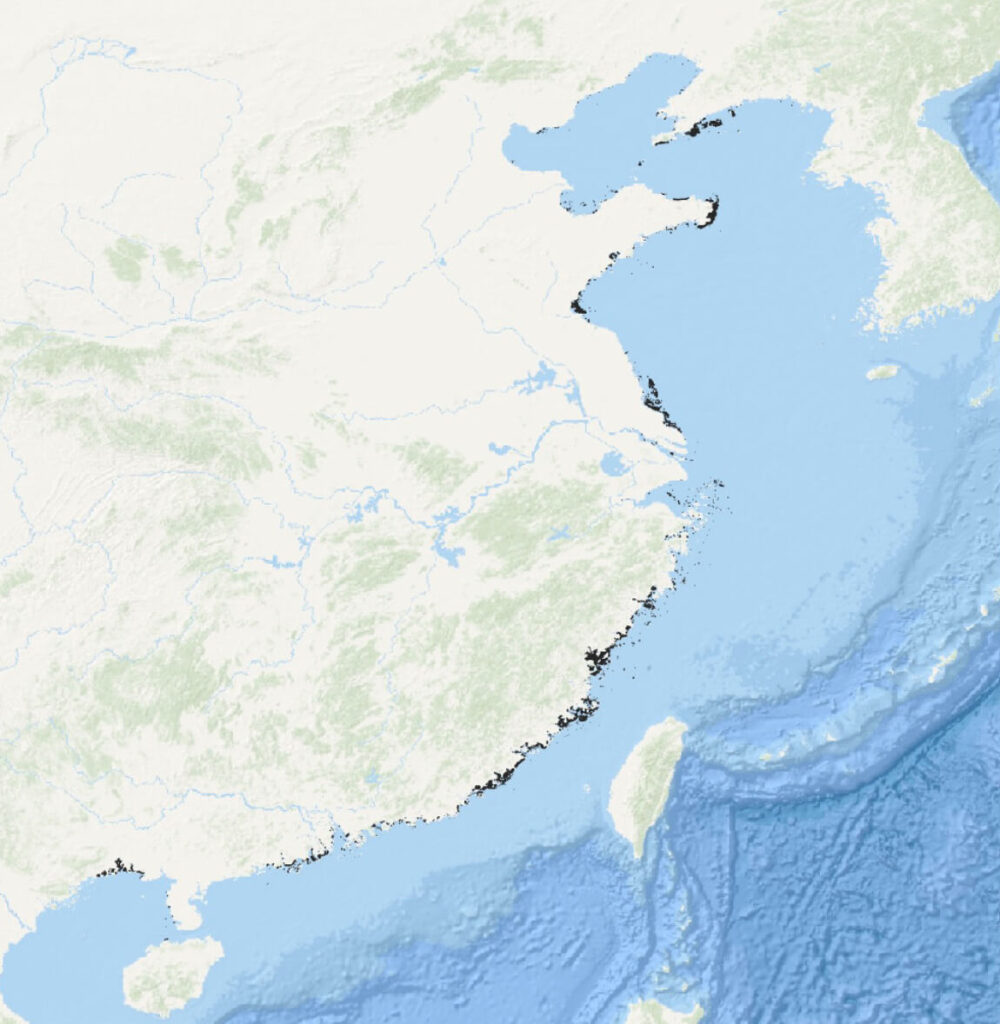
Where are these suitable areas?
How they are distributed?
Target 1 – Feasibility
Quantify the expansion potential of marine seaweed and bivalves cultivation
Expected results:
Marine environment suitability map for seaweed & bivalve cultivation (in China);
Method:
Species Distribution modelling (Oyinloala, 2018, 2022)
Data sources:
Public sources (e.g. OBIS, GBIF, GMED, Bio-oracle database)
Target 2
Accounting the maximum potential of carbon naturalization by seaweed and bivalves cultivation
What’s the maximum carbon neutralization potential by seaweed farming? And for “charismatic carbon”?
Target 2 – Feasibility
Accounting the maximum potential of carbon neutralization and acidification treatment by seaweed and bivalves cultivation
Expected results:
Potential production (carbon reservation) map for seaweed and bivalves cultivation.
Method:
Integrated cultivation suitability (e.g. species distribution modelling in target 1) and biophysical production modelling.
Data sources:
Public databases (marine environmental data), publications (farming species growth data)
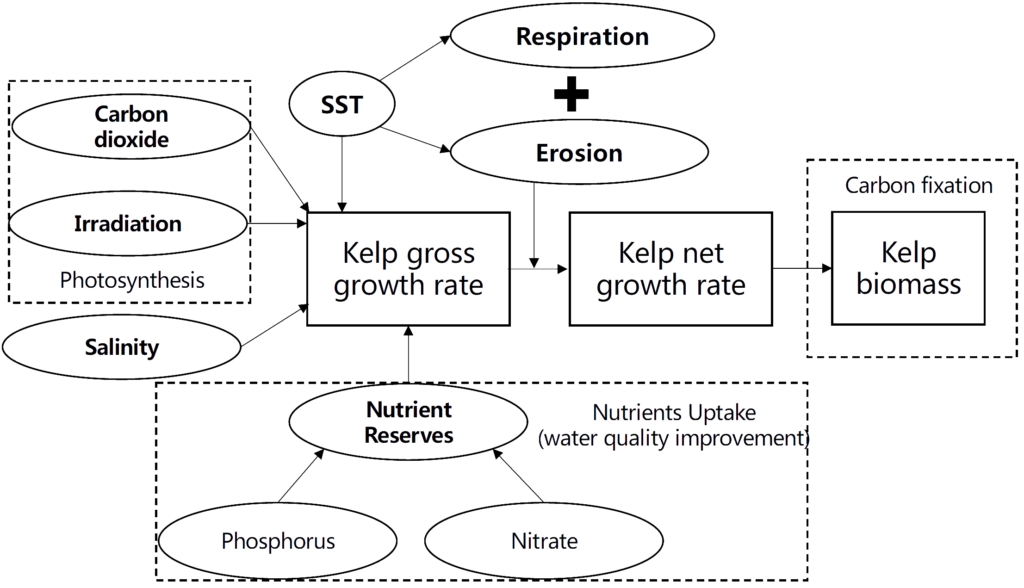
Target 3
Validating the habitat provision services provided by seaweed and bivalves cultivation (including their infrastructures)
Can we observe the habitat provision service and quantify it through scientific approaches?
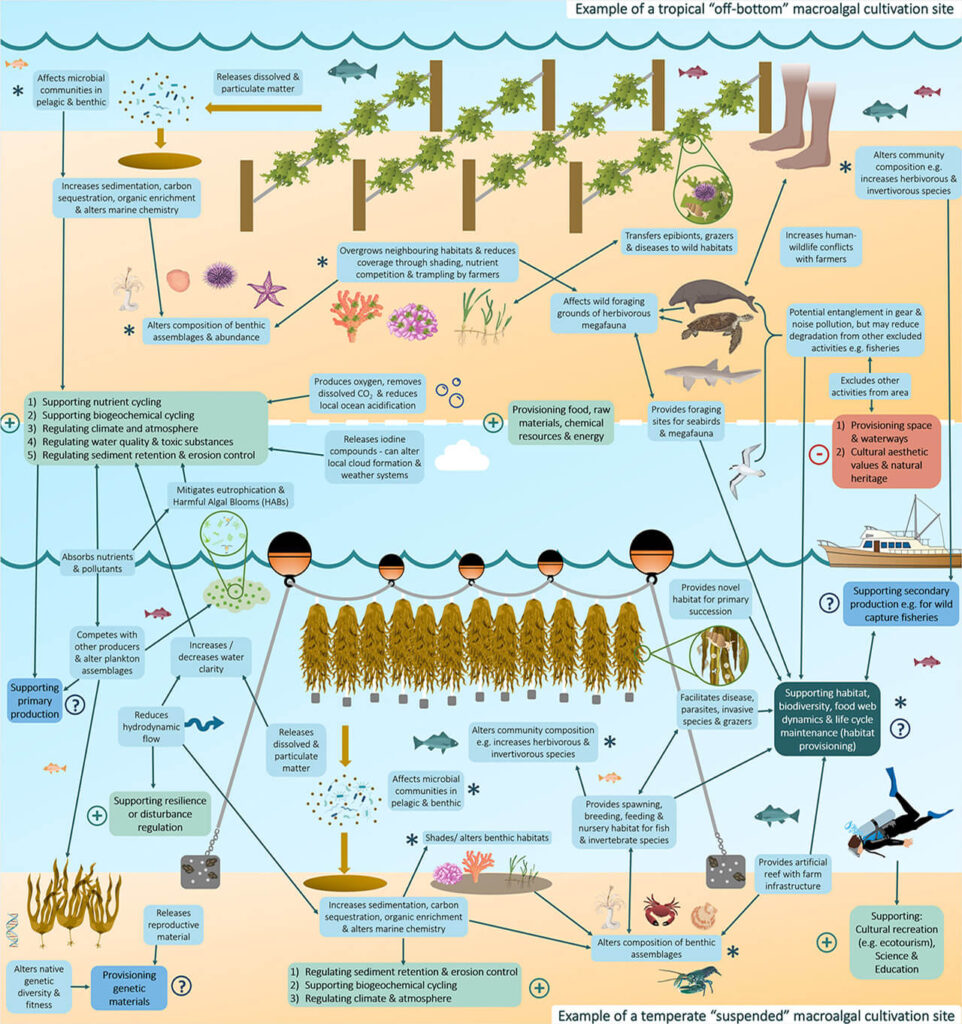

Validating the habitat provision services provided by seaweed and bivalves cultivation (including their infrastructures)
Can we observe the habitat provision service and quantify it through scientific approaches?
Validating the habitat provision services provided by seaweed and bivalves cultivation (including their infrastructures)
Expected results:
Survey results for the biodiversity consequences by marine seaweed and bivalves cultivation.
Method:
Seasonal field survey by eDNA in North Jiangsu Province and Xiapu, Fujian Province, China, both sites represent largest seaweed cultivation production in China
Xiapu, Fujian Province


North Jiangsu Province

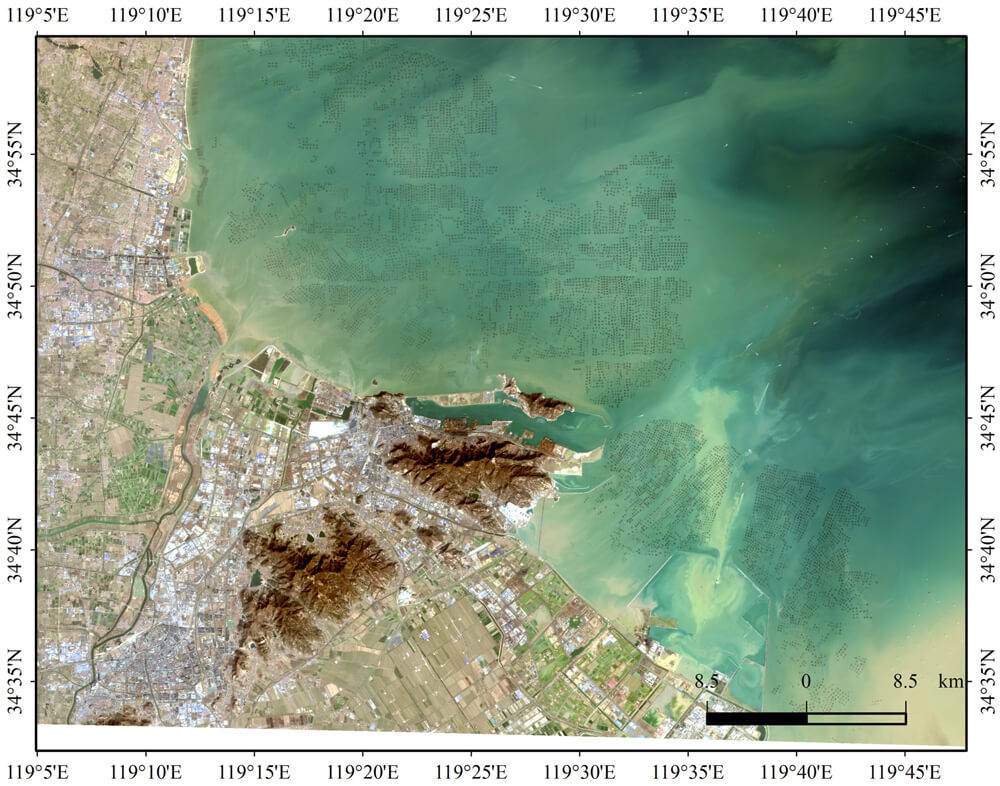
Target 4
Quantify the impact of climate change on seaweed cultivation production / ecosystem service potential.
How would climate change affect the potential of seaweed and bivalves cultivation for both production and ecosystem service purpose?
Target 4 – Feasibility
Quantify the impact of climate change on seaweed cultivation production / ecosystem service potential.
Expected results
Potential seaweed production output (carbon reservation) map for seaweed/shellfish cultivation under climate change.
Method:
Combine all models established in target 1-2;
Data sources:
Public sources (cmip data for future climate)
Team



Dr. Ling Cao
Dr. Yue Liu
Dr. Cong Zeng
Last updated

